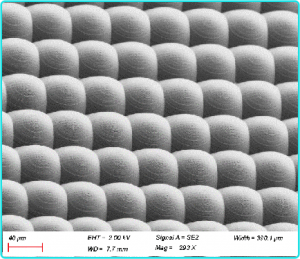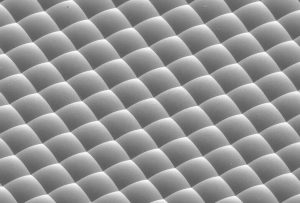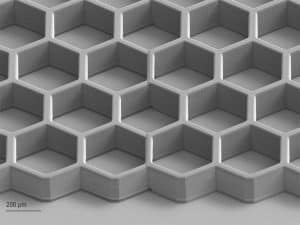
Micro and Nano Processing | Photolithography - Optical Lithography
In Nametersand micro plusWorktechnology in the context of photolithographyUseIn the substrate tableFacethe above shouldUsepattern for subsequent transfer to the nextFaceon the substrate.
Optical lithography uses light to copy patterns from a master (photomask) to a substrate. This process is very similar to traditional negative photographic reproduction. A photosensitive polymer (photoresist) is applied to the substrate and then exposed through a photomask. The exposed photoresist undergoes a chemical reaction that results in a change in solubility. This is then used to dissolve some of the photoresist, leaving the patterned photoresist behind. There are several different lithography techniques such as contact, projection, immersion and interferometry, as well as UV, deep UV, extreme UV and X-ray based methods.
Non-optical lithography involves electron beam, ion beam or mechanical force to create patterns on resist films. They are electron beam lithography (EBL), focused ion beam (FIB) lithography, and nanoimprint lithography (NIL). These techniques and their limitations are briefly described in the following sections.
Light source
UV light source usuallyUseIn lithography. This is not only because of the better image resolution due to the short wavelengths, but also because the UV-sensitive photochemicals in the wireless environment make it possible to obtain a better image resolution.Use. Mercury vaporizationGaslamp is still the main UV light source in lithography, and its emission lines are405nm (h line), 365nm (i line) and 254nm. which makesUseThe most365nm (i-line), and many photoresists have been developed for this spectral range. The need to obtain more and moreHighThe resolution of the breast began to makeUseDeep UV light sources, such as248 and 193 nm quasi-subdivisionsubLasers.Table of ContentsFormerly under development13.5nm EUV light source. In lithography shouldUseIn this case, the intensity of illumination must be in the entire substrate tableFaceStay onOneTo.HighThe S beam is unacceptable and needs to be eliminated toSinceThe scatter pattern of the laser source. Therefore, the costBigMeasure energy to shape the beam into a flat, uniform profile.
Photoresist
Photoresists are photosensitive organic polymers in solvents that are most often applied to substrates by spin coating. Photoresists consist of a photosensitive compound, a resin, and a solvent. The solventTable of Contentss just to allow the photoresist to be spin coated. After the spin coating step, the solvent is removed by heating the photoresist. The resin isUseThe structural composition of the photoresist for subsequent pattern transfer. InAmong i-line (365nm) photoresists, the most commonUseThe resin is a phenolic resin (belonging to the phenolic series). The photoactive compound is diazanonaphthoquinone(DNQ). Upon exposure to UV light, DNQ releasesOneSpecies of photo acids fromAndIncreases the solubility of the resin. This type of photoresist is also known as a positive photoresist because the exposed area is eventually removed andAndUnexposed areas will be preserved. The dynamic range of solubility can beBigin three orders of magnitude andHighdegreeNotLinearity, which is where lithography has outcolorReasons for contrast.
Exposure is usually measured in millijoules of ears per square centimeter (mJ/cm2). This is the illumination intensity in mW/cm2 multiplied by the exposure time. Typical dose values range from 50 to 500 mJ/cm2.
A commonly used variant is the negative photoresist. These photoresists have the opposite behavior, where the solubility of the photoresist decreases after exposure.
Photomasks
Photomasks are transparent glass substrates on which metal patterns are formed to block light transmission. This metal is usually chromium because it has excellent adhesion to glass and is very opaque to UV waves. A standard photolithography process is used to create the photomask, including the application of photoresist, exposure and pattern transfer to the chromium layer below.
However, for exposure, rather than photomasks, scanning tools such as laser use scanners or electron beam scanners. An ultraviolet laser source (e.g., HeCd or ArF) is used to raster scan the entire surface of the laser spot while turning the laser beam on and off with a software-driven fast lens containing the photomask design. Assuming a HeCd laser with a wavelength of 325 nm, the smallest spot size achievable is about 300 nm, and binary features such as lines may require multiple widths of the spot. Therefore, the commonly advertised limit for laser-written photomasks is about 1 mm. Electron beam writing is used when smaller features are required.
We offer fastMEMS device / micro and nanostructure processing design services, Feel free to leave a message to inquire.


